Lightning fatalities on the rise
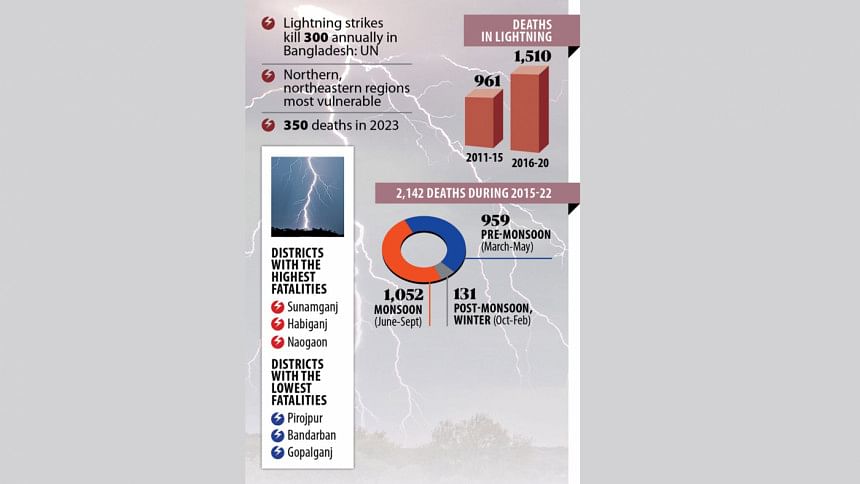
Bangladesh has been witnessing a rise in casualties from lightning strikes mainly due to drastic shifts in weather patterns.
Most of the fatalities happen in the pre-monsoon and monsoon seasons, with the northern and northeastern regions being the most vulnerable areas, according to the "GIS-based spatial analysis for lightning scenario in Bangladesh".
The southern parts of the country exhibit lower susceptibility to such incidents, says the study published in Heliyon, a peer-reviewed journal.
"The pattern and characteristics of the weather drastically changed in Bangladesh due to global warming, resulting in extreme climatic events like prolonged heatwaves, cold waves and shifts of seasons. That's why we see a rising trend in lightning."
From 2015 to 2022, lightning strikes left 2,142 people dead and 538 others injured in the country, adds the study published in March.
According to the UN, Bangladesh witnesses an average of 300 deaths by lightning every year. The US, which has almost double the population, sees fewer than 20 deaths a year caused by lightning strikes.
According to Bangladesh Disaster Forum, an NGO, at least 22 people have been killed by lightning so far this year. Eleven of them got killed on Thursday.
In 2010, the number of people killed by lightning strikes was 123. Last year, it was 350, says the NGO.
"The pattern and characteristics of the weather drastically changed in Bangladesh due to global warming, resulting in extreme climatic events like prolonged heatwaves, cold waves and shifts of seasons. That's why we see a rising trend in lightning," said Muhammad Abul Kalam Mallik, one of the authors of GIS-based spatial analysis.
The study analysed data from Bangladesh Meteorological Department records and NASA's Lightning Imaging Sensor data from the International Space Station's Near-real Time mission to assess lightning-related incidents from 2015 to 2022.
"As a consequence of its geographical location, Bangladesh ranks among the countries most prone to lightning fatalities globally," reads the study.
The pre-monsoon and monsoon seasons are characterised by soaring temperatures and frequent lightning strikes, driven by intense solar radiation. These seasons witness the highest density of cloud-to-ground lightning strikes, said Dr Ferdous Ahmed, lead researcher of the study.
As this is also a period of intense agricultural activities, farmers and fishermen remain particularly vulnerable to lightning strikes, it says.
Experts link climate change, inadequate early warning systems, and absence of big tree coverage with the increased frequency of lightning-induced deaths in Bangladesh.
According to Nayeem Wahra, member secretary of Disaster Forum, "Local warning systems should be enhanced and lightning arresters should be installed in the lightning-prone areas. If we can make people aware, these deaths can be prevented."
Lightning-related fatalities are different because it is often the most active person of the family or breadwinner who dies, Wahra says, urging the government not to cut large trees as these can save lives during lightning strikes.
The government declared lightning a natural disaster in 2016 and took steps to plant around 5 million palm trees along roads, but experts say the project has yet to yield the expected result because the trees that had been planted take a long time to grow.
"We have sent a proposal to the planning commission, seeking approval for installing lightning arresters in the open fields with little tree coverage. Hopefully, we will get the approval and will be able to install the arresters from the next fiscal year," says Mizanur Rahman, director general of the Department of Disaster Management.
The BMD installed lightning detection sensors in eight lightning-prone districts to send early warnings, says its Director Azizur Rahman.
"We send messages to the Department of Disaster Management and Bangladesh Inland Water Transport Authority 30 minutes before lighting. We are also running a pilot project to send messages to the people present in a particular area," he adds.

 For all latest news, follow The Daily Star's Google News channel.
For all latest news, follow The Daily Star's Google News channel. 


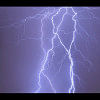
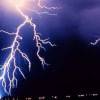
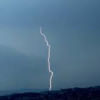
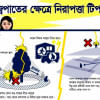

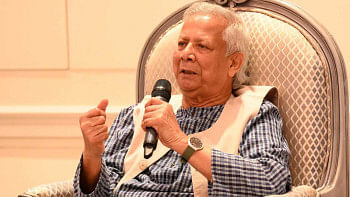
Comments